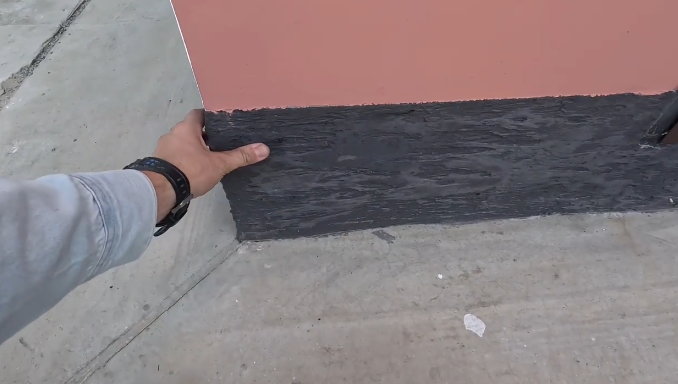
In the world of construction and design, black never goes out of style. Whether in sleek modern architecture or industrial-style renovations, black serves as a timeless, powerful color. But what if you could bring this striking look directly into cement-based surfaces without using liquid paint or costly additives? That’s where dry paint for cement mortars comes in—a simple, durable solution that delivers an eternally black base with practical benefits.
What is Dry Paint for Cement Mortars?
Dry paint for cement mortars, often referred to as pigment powder or dry colorant, is a powdered pigment specifically designed to be mixed directly into cement or mortar mixtures. Unlike surface-level coatings or finishes, this method integrates the color throughout the entire mixture. That means the black color penetrates deeply, ensuring a more uniform, fade-resistant, and weather-resistant result.
These dry pigments are typically composed of iron oxide, a stable and long-lasting compound that can withstand the high pH levels in cement. The result is a black base that retains its intensity for years—even decades—without significant fading, cracking, or peeling.

The Appeal of a Black Cement Base
Why go black? A deep black base adds sophistication and elegance to surfaces, whether in exterior pavements, interior floors, countertops, or artistic installations. Beyond aesthetics, there are several compelling reasons to consider a black cement finish:
- UV Resistance: High-quality dry pigments are designed to resist UV rays, which makes them excellent for outdoor use.
- Dirt Masking: Black cement surfaces naturally hide dust, stains, and imperfections better than lighter tones.
- Visual Contrast: In landscaping and urban design, a black base provides a dramatic contrast with vegetation, lighting, and structural features.
- Thermal Absorption: While it can absorb more heat (a downside in hot climates), it’s beneficial in cold regions or radiant flooring systems.
How to Use Dry Black Pigment in Cement Mortar
Using dry black pigment is relatively straightforward, but precision and proper mixing techniques are essential to achieve consistent and lasting results.
Step 1: Choose the Right Pigment
Not all black pigments are created equal. For cement applications, synthetic iron oxide black is the most recommended option due to its chemical stability and strong tinting power. Always choose a pigment that is specifically labeled as compatible with cement or concrete.

Step 2: Calculate the Dosage
The intensity of the black color depends on the pigment-to-cement ratio. Typical usage is 2% to 10% of the cement weight, depending on how dark you want the final result. Too little will produce a grayish tone; too much can weaken the mortar. It’s important to follow the manufacturer’s recommendations.
Step 3: Dry Mixing
Before adding water, mix the dry pigment thoroughly with the dry cement and sand. Uniform dispersion of the pigment at this stage ensures even coloring in the final product. You can use a mechanical mixer or mix manually for smaller batches.
Step 4: Add Water and Mix Again
Once the dry ingredients are fully blended, add water gradually while continuing to mix. Consistency is crucial—not just for color, but for workability and strength.
Step 5: Application
Use the pigmented mortar just like any regular mortar. Whether for bricklaying, rendering, or decorative work, the application method doesn’t change. However, try to finish the surface evenly to avoid patchy appearances.
Step 6: Curing
Proper curing is key to achieving a strong, long-lasting finish. Keep the mortar damp and shaded for several days to allow the cement to fully hydrate and the color to set deeply.

Where Can You Use Eternally Black Cement Mortars?
The possibilities are nearly endless. Some of the most popular applications include:
- Driveways and walkways: A black cement path stands out beautifully against green landscaping.
- Interior floors: Polished black concrete adds a modern and bold character to living rooms, kitchens, and bathrooms.
- Walls and facades: Use black render for a minimalistic or industrial exterior.
- Countertops: Black pigmented mortar is perfect for custom-built concrete kitchen or bathroom countertops.
- Sculptures and installations: Artists often use pigmented cement to create dramatic, durable outdoor pieces.
Advantages Over Traditional Surface Paint
Using dry pigment within cement offers several advantages over painting the surface after curing:
- No Peeling or Chipping: Because the color is embedded in the material, there’s no top layer to peel off over time.
- Weather Resistance: Rain, sun, and wind have less effect on the color, making it ideal for outdoor use.
- Less Maintenance: Colored cement requires minimal upkeep, unlike painted surfaces that may need regular touch-ups.
- Natural Look: Dry pigment provides a rich, matte finish that looks more organic and less artificial compared to surface paints.
- Eco-Friendly: Many dry pigments are non-toxic and require fewer volatile compounds than traditional paints.

Considerations and Limitations
While black dry pigments offer many benefits, there are also some considerations to keep in mind:
- Color Variation: Slight differences in mixing ratios or curing conditions can lead to shade variations. Always do a test batch first.
- Efflorescence: White salt deposits can appear on dark cement surfaces. Using low-alkali cement and proper sealing can reduce this effect.
- Cost: High-quality pigments can add to the cost, although the long-term savings in durability often offset this.
- Heat Retention: Black surfaces can become hotter under direct sunlight, which may be undesirable in some applications.
Enhancing the Look with Sealers
To make the black color even more striking and to add extra protection, consider applying a clear sealer after the mortar has fully cured. Sealers can give the surface a glossy or satin finish, deepen the color, and reduce staining from water, oil, or chemicals.

Conclusion
An eternally black base created with dry paint for cement mortars is more than just a trend—it’s a durable, elegant, and smart way to bring color and character to any cement-based project. Whether you’re a DIY enthusiast, contractor, or designer, incorporating black pigment into your mortar mix can yield professional-grade results that last for decades. With the right materials, techniques, and creativity, your black cement surfaces can truly stand the test of time—both in function and fashion.


